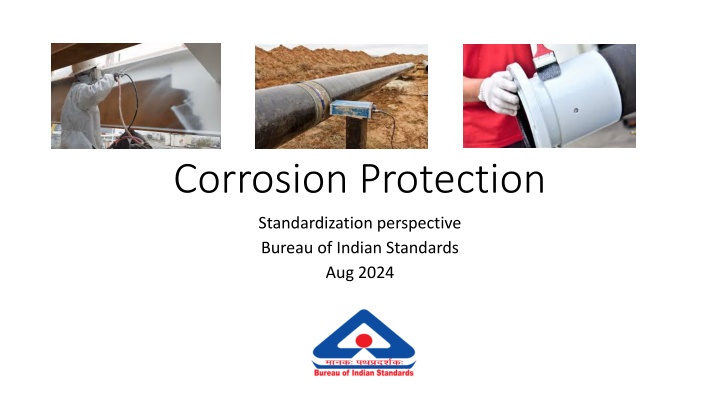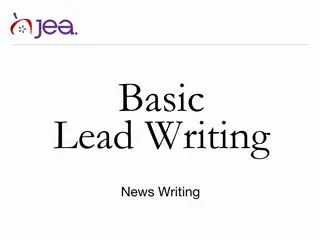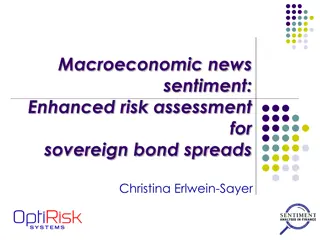
Understanding Corrosion Protection Standards in India
Explore the significance of corrosion protection from the Bureau of Indian Standards' perspective in this session. Learn about the importance of standards, key topics covered, and definitions of corrosion in Indian standards. Discover fundamental principles outlined in Indian standards related to corrosion protection.
Download Presentation

Please find below an Image/Link to download the presentation.
The content on the website is provided AS IS for your information and personal use only. It may not be sold, licensed, or shared on other websites without obtaining consent from the author. If you encounter any issues during the download, it is possible that the publisher has removed the file from their server.
You are allowed to download the files provided on this website for personal or commercial use, subject to the condition that they are used lawfully. All files are the property of their respective owners.
The content on the website is provided AS IS for your information and personal use only. It may not be sold, licensed, or shared on other websites without obtaining consent from the author.
E N D
Presentation Transcript
Corrosion Protection Standardization perspective Bureau of Indian Standards Aug 2024
Objective of this session Standards refer to documented agreements containing technical specifications or other precise criteria to be used consistently as rules, guidelines or definitions of characteristics to ensure that goods, articles, processes, systems and services are fit for their purpose (Definition as per BIS Act, 2016) A good corrosion engineer is required to deliver effective corrosion protection solutions at an optimum cost. Standards play an important role in this respect. Thus, this session is intended to introduce you to Standards on corrosion protection, How standards can help deliver effective corrosion protection solutions and The advantages of a standards based approach to corrosion protection.
Important Topics on Corrosion Protection covered Important Topics on Corrosion Protection covered in educational curriculum and in Indian Standards in educational curriculum and in Indian Standards Definition of Corrosion Corrosion Principles Types of corrosion Corrosion protection, which includes Materials such as protective coatings used for corrosion protection, Methods of corrosion protection, and Corrosion tests
Definition of corrosion as per Indian Standard As per IS 3531:2024 (Corrosion of Metals and Alloys Vocabulary), corrosion is defined as: Physicochemical interaction between a metallic material and its environment that results in changes in the properties of the metal, and that may lead to significant impairment of the function of the metal, the environment or the technical system, of which these form a part (This interaction is often of an electrochemical nature.)
Corrosion Principles as per Indian Standards IS 3531:2024 (Corrosion of Metals and Alloys Vocabulary) also defines several important principles related to corrosion in different areas including Electrochemical Cell (electrolyte, electrode, anode, cathode, passivation, polarization etc.) Reaction Rates (Anodic and Cathodic partial current, current density/potential curve/polarization curve etc.) Passivation (Passivation potential, depassivation etc.) Electrochemical protection (Anodic and Cathodic protection, sacrifical anode etc.) Electrochemical corrosion tests (potentiostatic test, galvanostatic test etc.)
Corrosion Principles as per Indian Standards Some examples of principles defined in the Indian Standard are: Electrochemical corrosion - defined as corrosion involving at least one anodic reaction and one cathodic reaction. Where Anodic reaction is defined as- electrode reaction equivalent to a transfer of positive charge from the electronic conductor to the electrolyte and Cathodic reaction as - transfer of negative charge from the electronic conductor to the electrolyte Passivation - defined as decrease of corrosion rate by a passivation layer. Where, corrosion rate is defined as corrosion effect on a metal per unit time and passivation layer as thin, adherent, protective layer formed on a metal surface through a reaction between the metal and its environment
Types of Corrosion as per Indian Standards There are various types of corrosion which are defined in IS 3531:2024 (Corrosion of Metals and Alloys Vocabulary), such as: General corrosion - corrosion proceeding over the whole surface of the metal exposed to the corrosive environment Localized corrosion - corrosion preferentially concentrated on discrete sites of the metal surface exposed to the corrosive environment Pitting corrosion - localized corrosion resulting in pits, i.e. cavities extending from the surface into the metal Crevice corrosion - localized corrosion associated with, and taking place in or immediately around, a narrow aperture or clearance formed between the metal surface and another surface (metallic or non-metallic)
Importance of standards on vocabulary and terminology of corrosion These standards help engineers in many ways including Providing a ready, authentic and complete source of information regarding important scientific principles related to corrosion Providing a common and standardized language for conversations relating to corrosion and corrosion protection, which can help overcome communication barriers among engineers from different places and backgrounds
Indian Standards on corrosion protection Indian Standards related to corrosion protection can be broadly categorized into the following major categories Sl No. Category Examples 1 Material specifications, mainly Protective coating specifications e.g. IS 4759:1996 - Hot - Dip zinc coatings on structural steel and other allied products - Specification 2 Codes of practice for corrosion protection e.g. IS 10221 : 2008 - Coating and wrapping of underground mild steel pipelines - Code of practice 3 Testing methods e.g. IS 6745 : 1972 - Methods for determination of mass of zinc coating on zinc coated iron and steel articles
Standards on protective coating specifications Standards on protective coating specifications Protective coating is defined in IS 3531:2024 as layer(s) of material applied to a metal surface to provide corrosion protection. Let us examine how standards on protective coating specifications are important by studying the following standards IS 4759:1996 - Hot - Dip zinc coatings on structural steel and other allied products - Specification IS 1359 : 1992 - Electroplated coatings of tin - Specification
IS 4759:1996 IS 4759:1996 - - Hot other allied products other allied products - - Specification Hot - - Dip zinc coatings on structural steel and Dip zinc coatings on structural steel and Specification Scope - This standard specifies requirements for zinc coating applied by hot-dip galvanizing on iron and steel products, fabricated or assembled from cast, rolled, pressed and forged shapes, such as structural steel sections, plates and bars. The major parameters specified in the standard, and their importance is as follows: Quality of Zinc - The standard specifies the quality of zinc that must be used for coating of steel. This is important because zinc coating offers protection against corrosion since zinc sacrificially corrodes instead of steel. If zinc is not of sufficient purity, the protection offered by the coating will not be effective.
IS 4759:1996 IS 4759:1996 - - Hot other allied products other allied products - - Specification Hot - - Dip zinc coatings on structural steel and Dip zinc coatings on structural steel and Specification Continued.. Galvanizing methods - The standard also recommends a method for the process of galvanizing the steel (as per IS 2629). Standardizing the galvanizing process is important because it ensures uniform coating thickness, better adherence, less dross formation and better surface appearance, leading to better corrosion protection. Mass, uniformity of Zinc coating - The standard specifies minimum mass of zinc coating for different kinds of products as well as for its uniformity. Standardization of these parameters is important since if the mass of coating is insufficient, or non-uniform, the sacrificial protection provided against corrosion will also be inadequate.
IS 4759:1996 IS 4759:1996 - - Hot other allied products other allied products - - Specification Hot - - Dip zinc coatings on structural steel and Dip zinc coatings on structural steel and Specification Continued.. Coating adhesion - The standard specifies a requirement for adhesion since lack of adhesion may lead to defects in coating, which in turn can lead to ingress of moisture and air, leading to corrosion. Adhesion is therefore, important for effective corrosion protection Methods of test - The standard also specifies methods for testing coating mass, uniformity and adhesion. The importance of having standardized test methods will be covered later in the presentation.
IS 1359 : 1992 IS 1359 : 1992 - - Electroplated coatings of tin Electroplated coatings of tin - - Specification Specification Scope - This standard specifies the requirements for electroplated tin coatings of not less than 99.5 percent tin applied to fabricated articles of Iron, Steel, Nickel alloys and Copper and copper alloys containing more than 50 percent of copper. It also covers coatings brightened by fusion in hot oil after electrodeposition, the process being known as flow-brightening or flow melting. The major parameters specified in the standard, and their importance is as follows: Tin quality - The standard specifies that the anode material shall be pure tin conforming to IS 2384. This is important because tin coating offers protection against corrosion since tin sacrificially corrodes instead of steel. If tin is not of sufficient purity, the protection offered by the coating will not be effective.
IS 1359 : 1992 IS 1359 : 1992 - - Electroplated coatings of tin Electroplated coatings of tin - - Specification Specification Continued.. Coating thickness - The standard specifies minimum coating thickness based on the service grade number of the base material, which ranges from Number 1 (Mild) to Number 1(exceptionally severe) depending upon the corrosive conditions in which the product is likely to be used. As may be expected, minimum thicknesses are lower for milder conditions and higher for more severe conditions. This is important because while standardizing minimum coating thickness is essential for ensuring corrosion protection, using more than necessary amount of coating would increase costs without any appreciable improvement in corrosion protection, violating a basic tenet of corrosion engineering.
IS 1359 : 1992 IS 1359 : 1992 - - Electroplated coatings of tin Electroplated coatings of tin - - Specification Specification Continued.. Coating adhesion - The standard specifies a requirement for adhesion since lack of adhesion may lead to defects in coating, which in turn can lead to ingress of moisture and air, leading to corrosion. Adhesion is therefore, important for effective corrosion protection. Methods of test - The standard also specifies methods for testing coating mass, uniformity and adhesion. The importance of having standardized test methods will be covered later in the presentation.
Importance of standards on protective coating Importance of standards on protective coating specifications specifications Standards on protective coating specify minimum quality/purity of the coating metal such as zinc or tin minimum requirements for coating thickness or coating mass based on the substrate and service conditions requirements for uniformity of coating requirements for adhesion of coating methods of test Standardizing these parameters helps ensure better corrosion protection through protective coating for given conditions at an optimum cost
Standards on Codes of practice for corrosion Standards on Codes of practice for corrosion protection protection Corrosion protection methods aim to minimize or eliminate corrosion's harmful effects by implementing various measures to protect materials against corrosive agents. The selection of a particular corrosion protection method depends on the type of material, the environment in which it will be used and the potential sources of corrosion. Standards on codes of practice for corrosion protection are intended to serve as guides for corrosion engineers to implement a corrosion protection solution in a given situation
Standards on Codes of practice for corrosion Standards on Codes of practice for corrosion protection protection Let us examine the following standards on codes of practice to understand how these are important for corrosion protection IS 10117 : 2000 - Code of practice for passivation of stainless-steel articles, industrial equipments and components including pipelines IS 10221 : 2008 - Coating and wrapping of underground mild steel pipelines - Code of practice
IS 10117 : 2000 IS 10117 : 2000 - - Code of practice for passivation of stainless Code of practice for passivation of stainless- -steel articles, industrial equipments and components including pipelines articles, industrial equipments and components including pipelines steel Scope - This standard covers the processing of stainless steel industrial equipments, components including pipelines to produce a film essentially of metal oxides (i.e. passivation) that are intended to be used for corrosion protection. Surface Preparation - The standard starts out by specifying the surface treatment processes that the stainless steel components should be subjected to, to prepare the item for the passivation treatment. This includes the manner of cleaning the surfaces, then pickling (i.e. acid treatment), brushing with hot water and drying, mechanical descaling such as through abrasive blasting, sanding etc. The objective is to remove any contaminants such as grease oils, or any residue from the surface of the steel.
IS 10117 : 2000 IS 10117 : 2000 - - Code of practice for passivation of stainless Code of practice for passivation of stainless- -steel articles, industrial equipments and components including pipelines articles, industrial equipments and components including pipelines steel Passivation treatment The standard recommends different passivation treatments depending on the steel grade and the surface conditions. The process to be followed for the passivation treatments is also described in detail including the concentration of the acid or alkali solution in which the item is to be immersed, the temperature and the time for which immersion is required, and finally, rinsing in water and drying. The standard also recommends that safety precautions be taken, including using personal protective equipment and providing adequate ventilation when working with acids and other corrosive chemicals
IS 10117 : 2000 IS 10117 : 2000 - - Code of practice for passivation of stainless Code of practice for passivation of stainless- -steel articles, industrial equipments and components including pipelines articles, industrial equipments and components including pipelines steel Inspection and testing Finally, the standard also specifies visual examination and tests for checking the effectiveness of the passivation treatment by testing the corrosion resistance of the articles Different corrosion resistance tests are recommended based on the type of steel including copper sulphate test, ferroxyl test, boiling water test, high humidity test, pitting test and a test for corrosion resistance using potential time measurement
IS 10221 : 2008 IS 10221 : 2008 - - Coating and wrapping of underground mild steel Coating and wrapping of underground mild steel pipelines pipelines - - Code of practice Code of practice Scope - This standard covers the application requirements for a hot melt protective coating system for steel pipelines to be installed under normal or average construction conditions in soil. This Code was formulated to serve as a guide for corrosion protection of underground mild steel pipelines by using coating and wrapping materials, to isolate the pipeline from contact with the surrounding earth, thereby controlling corrosion, It also provides for additional cathodic protection against corrosion, which involves applying an external electrical current to the metal surface to reduce the corrosion rate.
IS 10221 : 2008 IS 10221 : 2008 - - Coating and wrapping of underground mild steel Coating and wrapping of underground mild steel pipelines pipelines - - Code of practice Code of practice Materials - The standard provides for protective exterior coating with a coating of primer followed by the application of enamel, one multiple wrap of fibre glass tissue and a layers of impregnated fibre glass tissue and/or a coat of water resistant white wash. The standard specifies the commonly used for coating and wrapping of underground pipelines including the types of: Primers : coal tar and synthetic primers Enamel: coal tar enamel Wrapping Materials: Inner and outer wrap of glass fibre, white wash and water emulsion paint
IS 10221 : 2008 IS 10221 : 2008 - - Coating and wrapping of underground mild steel Coating and wrapping of underground mild steel pipelines pipelines - - Code of practice Code of practice Application The standard specifies the basic steps to be followed for the external coating job for applying a single coat/double wrap and double coat/double wrap which involves: cleaning the surface, applying the primer, then the enamel, the inner and outer wrapping, finishing with the emulsion paint or white wash. The minimum total thickness of the coal tar enamel and wrapping is also specified. The general procedure of application is also described in detail including requirements for material, workmanship, equipment, cleaning, priming, coating, handling, lowering and backfilling
IS 10221 : 2008 IS 10221 : 2008 - - Coating and wrapping of underground mild steel Coating and wrapping of underground mild steel pipelines pipelines - - Code of practice Code of practice Different methods of application of wrapping material are specified: Mill/yard, site and line wrapping. The conditions based on which the choice of application should be made, are given: including weather conditions, site conditions, size of pipeline and location of site. Design considerations: The standards specifies the factors which shall be taken into consideration before taking up coating/wrapping including: nature of soil, past history of corrosion, environment, pipe dimensions and material, transport facilities and feasibility of providing cathodic protection The standard also provides guidance on how to determine the thickness of coating based on soil resistivity and corrosivity.
IS 10221 : 2008 IS 10221 : 2008 - - Coating and wrapping of underground mild Coating and wrapping of underground mild steel pipelines steel pipelines - - Code of practice Code of practice Inspection and measurement The standard specifies the manner of electrical inspection of coated and wrapped pipes using an approved high voltage holiday detector to indicate any defects in the protective coating. It also specifies the manner of measurement of the coating and wrapping including Cathodic Protection Since not even a reinforced coating can be guaranteed to provide satisfactory protection along its whole length, the standard recommends that a cathodic protection system conforming to IS 8062 (Part 2) shall be used in addition to the coating and wrapping, where the soil-resistivity is less than 5 000 -cm. For soil resistivity above 5 000 -cm, cathodic protection maybe used in consultation with corrosion engineers.
Importance of standards on codes of practice for Importance of standards on codes of practice for corrosion protection corrosion protection As you can see from the examination in previous slides, the standards on codes of practice for corrosion protection help engineers by providing a detailed and established method of implementing a corrosion protection system. The standards also help make the correct choices depending upon the local conditions rather than having to design a solution from scratch. A standardized code of practice for corrosion protection therefore reduces the time and cost required to implement a corrosion protection system, while also improving the odds of the solution working as per expectations.
Standards on Methods of test for Corrosion Testing Standards on Methods of test for Corrosion Testing Corrosion testing may be done for the following purposes Evaluation and selection of material for a given application or environment Evaluation of new or old metals or alloys to determine the environment for which they may be suitable Control of corrosion resistance of a material or corrosiveness of the environment e.g. Huey Test or Salt Spray Test Study of the mechanism of corrosion resistance Standard test methods ensure that the test results achieved using these methods are repeatable and reproducible, thereby increasing confidence regarding these results
Standards on Methods of test for Corrosion Testing Standards on Methods of test for Corrosion Testing Let us examine the following standards for corrosion tests to understand their importance IS 10461 (Part 1) : 1994 - Resistance to inter - Granular corrosion of austenitic stainless steels - Method for determination - Part 1 : corrosion test in nitric acid medium by measurement of loss in mass (Huey Test) IS 14297 : 2024/ISO 9226 : 2012 - Corrosion of Metals and Alloys - Corrosivity of Atmospheres - Determination of Corrosion Rate of Standard Specimens for the Evaluation of Corrosivity
IS 10461 (Part 1) : 1994 IS 10461 (Part 1) : 1994 - - Resistance to inter stainless steels stainless steels - - Method for determination Method for determination - - Part 1 : corrosion test in nitric acid medium by measurement of loss in mass (Huey Test) medium by measurement of loss in mass (Huey Test) Resistance to inter - - Granular corrosion of austenitic Granular corrosion of austenitic Part 1 : corrosion test in nitric acid Scope - The test method given in IS 10461 (Part 1) : 1994 is applicable to austenitic stainless steels supplied in the form of castings, rolled or forged products and tubes including weld metals and intended to be used in an oxidising media (for example, relatively concentrated nitric acid) Purpose of the test - The standard states the purpose of the test is to identify the susceptibility of stainless steel to corrosion, specifically the intergranular type*. *Intergranular corrosion - corrosion in or adjacent to the grain boundaries of a metal (IS 3531:2024)
IS 10461 (Part 1) : 1994 IS 10461 (Part 1) : 1994 - - Resistance to inter stainless steels stainless steels - - Method for determination Method for determination - - Part 1 : corrosion test in nitric acid medium by measurement of loss in mass (Huey Test) medium by measurement of loss in mass (Huey Test) Resistance to inter - - Granular corrosion of austenitic Granular corrosion of austenitic Part 1 : corrosion test in nitric acid Heat treatment - The standard states that it is necessary to carry out a heat treatment for sensitization in order to verify the effectiveness of the added stabilizing elements or low carbon content to resisting intergranular corrosion. Corrosion test - Principle: The principle of the test is specified i.e. test piece is weighed; then immersed in a boiling solution of nitric acid for 5 periods, each of 48 hour using fresh solutions for each period. The criterion for evaluating the test is loss in mass determined by weighing after each period.* *Thus, this test can be utilized to perform a comparison involving various steels to other objects' corrosion resistance in less oxidizing setups. It is recommended for detecting areas depleted of chromium and precipitations that exist among metals such as sigma phase. It is mainly used for objects that come in contact with highly oxidizing elements such as nitric acid.
IS 10461 (Part 1) : 1994 IS 10461 (Part 1) : 1994 - - Resistance to inter stainless steels stainless steels - - Method for determination Method for determination - - Part 1 : corrosion test in nitric acid medium by measurement of loss in mass (Huey Test) medium by measurement of loss in mass (Huey Test) Resistance to inter - - Granular corrosion of austenitic Granular corrosion of austenitic Part 1 : corrosion test in nitric acid Corrosion test contd.. Procedure The apparatus and chemicals required for conducting the test are specified The procedure for preparing the test piece and conducting the test is also specified Expression of results Finally, it is specified that the results shall be expressed in terms of corrosion rate (either as millimetres per year or grams per square metre per hour) to be calculated as per a formula
IS 14297 : 2024/ISO 9226 : 2012 IS 14297 : 2024/ISO 9226 : 2012 - - Corrosion of Metals and Alloys Atmospheres Atmospheres - - Determination of Corrosion Rate of Standard Specimens for the Determination of Corrosion Rate of Standard Specimens for the Evaluation of Corrosivity Evaluation of Corrosivity Corrosion of Metals and Alloys - - Corrosivity of Corrosivity of Scope - This standard specifies methods which can be used for the determination of corrosion rate with standard specimens. The values obtained from the measurements (corrosion rates for the first year of exposure) are intended to be used as classification criteria for the evaluation of atmospheric corrosivity Principle - The corrosivity of the exposure locations or of industrial installation sites is deduced from the corrosion rate, calculated from the loss of mass per unit area of standard specimens following the removal of corrosion products from the specimens after exposure periods of one year.
IS 14297 : 2024/ISO 9226 : 2012 IS 14297 : 2024/ISO 9226 : 2012 - - Corrosion of Metals and Alloys Atmospheres Atmospheres - - Determination of Corrosion Rate of Standard Specimens for the Determination of Corrosion Rate of Standard Specimens for the Evaluation of Corrosivity Evaluation of Corrosivity Corrosion of Metals and Alloys - - Corrosivity of Corrosivity of Standard Specimen - The types (steel, zinc, copper, aluminium) of test specimen and their dimensions have been specified. It is also specified that the specimen shall be cleaned and method therefor specified Exposure of standard specimen - It is specified that the specimen shall be exposed to the atmosphere for one year, starting at the beginning of the worst corrosive period of the year After exposure, the corrosion products formed on specimens shall be removed and reweighed
IS 14297 : 2024/ISO 9226 : 2012 IS 14297 : 2024/ISO 9226 : 2012 - - Corrosion of Metals and Alloys Atmospheres Atmospheres - - Determination of Corrosion Rate of Standard Specimens for the Determination of Corrosion Rate of Standard Specimens for the Evaluation of Corrosivity Evaluation of Corrosivity Corrosion of Metals and Alloys - - Corrosivity of Corrosivity of Expression of results - Finally, results are expressed in terms of the corrosion rate for each metal as mass loss per unit area over time or as a thickness reduction rate These results can help determine and classify the corrosivity of the atmosphere for different kinds of metals
Standards on Methods of test for Corrosion Testing Standards on Methods of test for Corrosion Testing From the examination of these two standards, we observed that corrosion tests can be used for: Determination of susceptility of certain materials to certain type of corrosion under certain conditions - which can help us in figuring out the underlying reasons affecting the corrosion resistance of the material and addressing it. (The Huey test, for example, can help identify issues with heat treatment or welding which are affecting the corrosion resistance of stainless steel) Classification of atmospheric corrosivity with respect to certain materials - which can help us predict the useful life of a given material under certain atmospheric conditions and also in selection of materials for given conditions.
Advantages of standards in corrosion protection Vocabulary and terminology standards provide authentic information on important terms and principles and bridge the communication gap in conversations around corrosion engineering Material specificationstandards such as protective coating standards can help engineers in easily selecting the correct protective coatings for a given application, thus saving time and costs Codes of Practice Standards serve as readymade and dependable guides to implement corrosion protection solutions which obviate the need to design solutions from scratch, again leading to saving in time and cost
Advantages of standards in corrosion protection Contd.. Method of Test Standards provide standardized methods for corrosion tests which increase confidence in test results among different stakeholders by ensuring repeatability and reproducibility of results Overall, standards help engineers in making important decisions related to material selection, design and implementation of corrosion protection.
Comparison of a standards based and non- standards based approach in corrosion protection Standards based approach Ensures Clear and common understanding of basic principles among engineers Ensures quick and cost effective material selection for corrosion protection Ensures readymade solutions for corrosion problems Ensures results of corrosion tests are repeable and reproducible, increasing confidence and acceptability of users without the need for addl checks Non Standards based approach Inconsistent understanding of principles and communication gap among engineers Material selection requires research and development, leading to delays and cost overrun For given situation, solutions to corrosion problems need to be developed from scratch Corrosion test results need to be subjected to secondary checks to be acceptable to users
Bibliography/Resources M.G. Fontana, Corrosion Engineering, 3rd Ed., McGraw-Hill, 1987. D. Talbot, J.R. Talbot, Corrosion Science and Technology, CRC Press, 1997. H.H. Uhlig, Corrosion and Corrosion Control, 3rd Ed., John Wiley, 1985. A.S. Khanna, Introduction to High Temperature Oxidation and Corrosion, ASM International, Ohio, 2002. https://www.corrosionpedia.com www.bis.gov.in






















